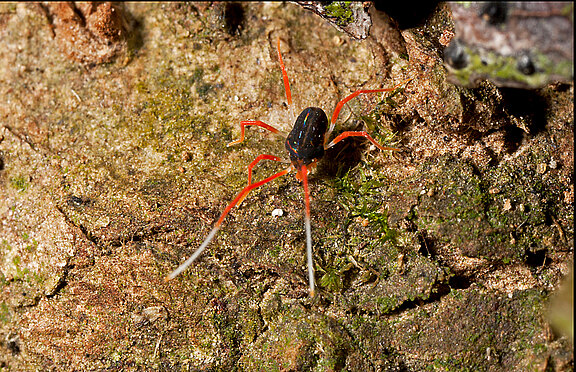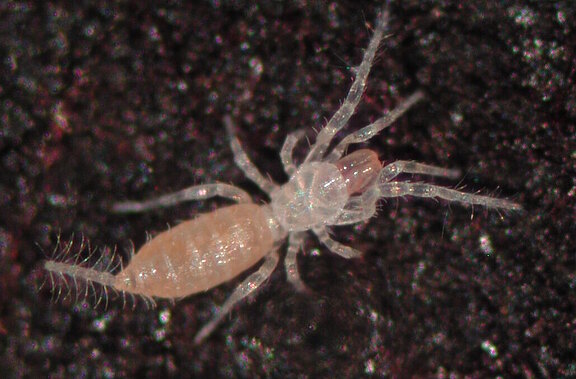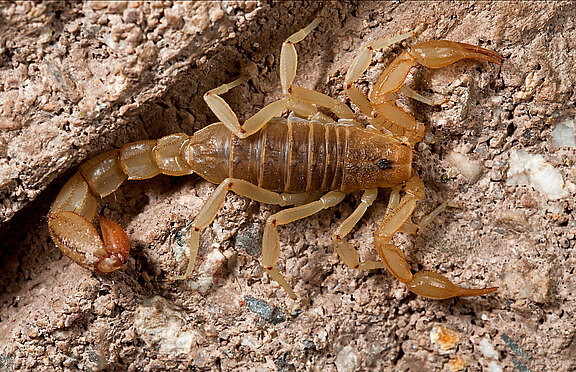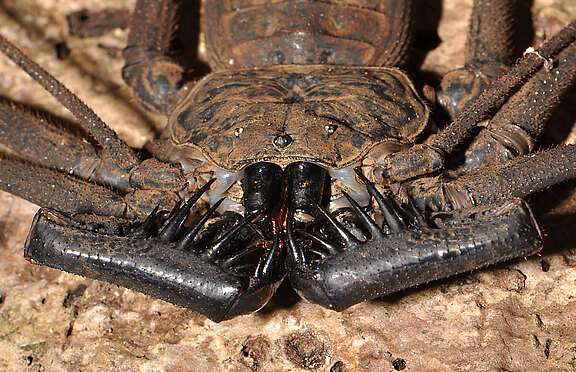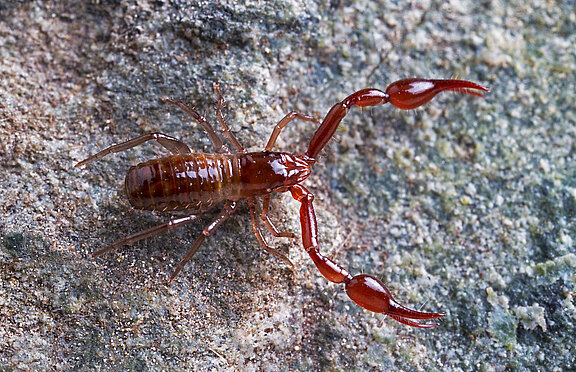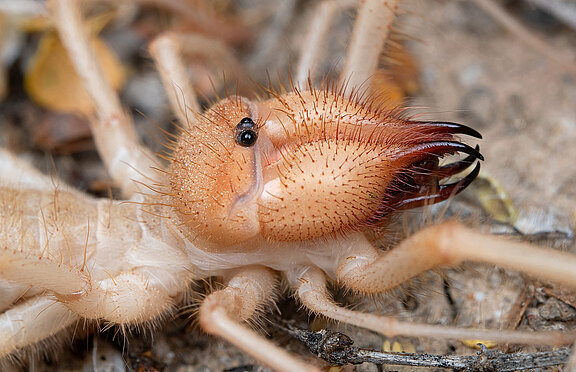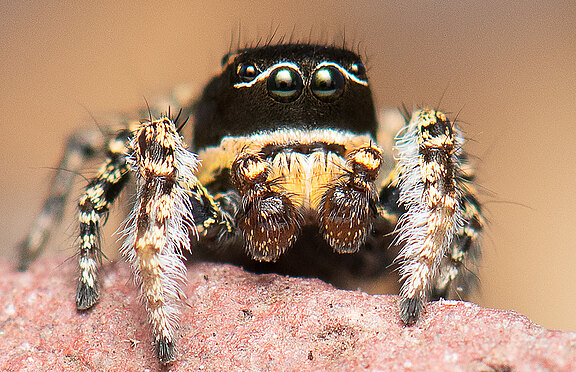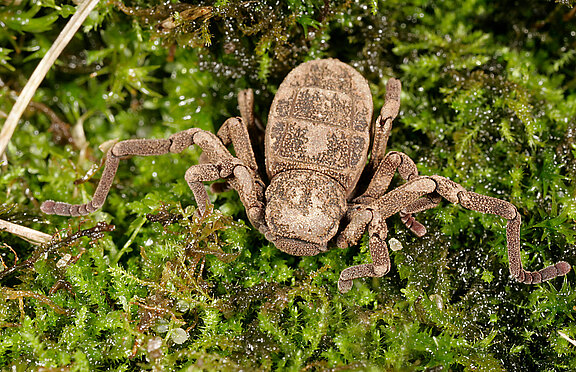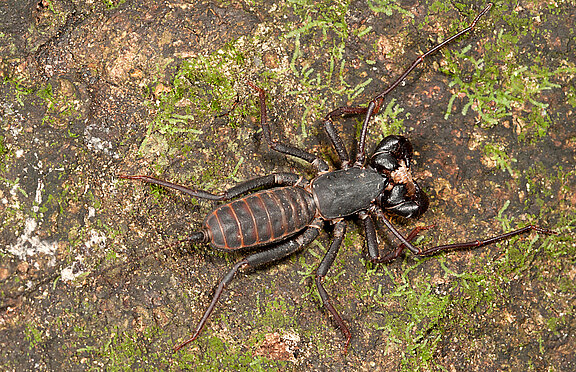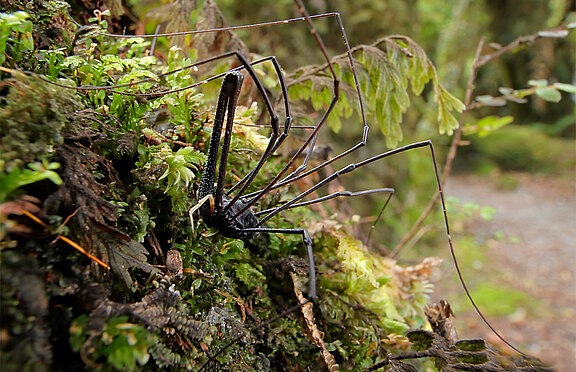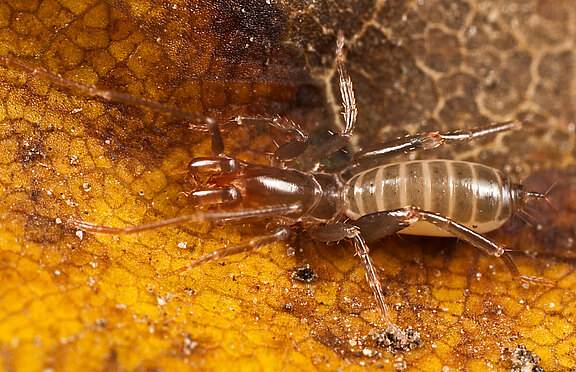Instructions to authors
Revised April 2025
All manuscripts are now submitted online at
http://www.editorialmanager.com/arachno
Jump to information about page charges and open access
General: The Journal of Arachnology publishes scientific articles reporting novel and significant observations and data regarding any aspect of the biology of arachnid groups. Articles must be scientifically rigorous and report substantially new information. Submissions that are overly narrow in focus (e.g., local faunal lists, descriptions of a second sex or of a single species or first record without additional discussion of the significance of this information), that have poorly substantiated observational data, or that present no new information will not be considered. Book reviews will not be published.
Manuscripts must be in English and should use the active voice throughout. Authors should consult a recent issue of the Journal of Arachnology for additional points of style. Manuscripts longer than three printed journal pages (10 or more US Letter-sized pages of 1.5 spaced, 12-point text) should be prepared as Feature Articles, shorter papers as Short Communications. Invited Reviews will be published from time to time and unsolicited reviews are also welcomed. All reviews will be subject to the same review process as other submissions.
The publications in which species descriptions were published are usually not included in the literature cited; however, papers containing original descriptions of arachnid taxa focal to the author’s study should be included (see "Taxonomic articles" below).
Checklist—Common Formatting Errors is available as a PDF
JoA-Common-Formatting-Errors
Submission: Manuscripts should be saved as Microsoft Word files and submitted electronically via our online system, PeerTrack (www.editorialmanager.com/arachno). PeerTrack will guide you through the step-by-step process including uploading the manuscript and all of its parts. Text, tables, figures, and appendices should each be uploaded as separate files. PeerTrack will assemble all parts of the paper into a PDF that you, as corresponding author, must approve before submission is complete. Supplemental Materials (see below) are not bundled into the PDF.
If the manuscript is accepted for publication, authors are responsible for ensuring that all figures meet the required resolution and dimensions (see Illustrations below). Any corrected figures may be submitted to PeerTrack or directly to the Editor-in-Chief.
Voucher Specimens: Specimens of species used in your research should be deposited in a recognized scientific institution. All type material must be deposited in a recognized collection/institution and the identity of the collection must be given in the text of the manuscript.
Featured Articles
Title page.—The title page includes the complete name, address, and e-mail address of the corresponding author; the title in bold 12-point text, each author’s name and address, and the running head.
Running head.—This should be in all capital letters, not exceeding 60 characters and spaces, and placed at the top of the title page. It should be composed of the authors’ surnames and a short title. Examples: SMITH—SALTICIDS OF PANAMA; SMITH & CRUZ—SALTICIDS… ; SMITH ET AL.—SALTICIDS…
Abstract.—Length: ≤ 250 words for Feature Articles.
Keywords.—Provide 3–5 appropriate keywords or phrases following the abstract. Keywords should not duplicate words in the title and avoid words that appear in the abstract.
Text.—Use 12-point font and 1.5 spacing between lines in text, tables, legends, etc. throughout. Except for titles and headers, all text should be left-justified only. Do not add line numbers—they are automatically added by PeerTrack. Three levels of headers are used.
- The first level (METHODS, RESULTS, etc.) is typed in capitals and centered on a separate line.
- The second level head begins a paragraph with an indent, is in bold type, and is separated from the text by a period and a dash.
- The third level may or may not begin a paragraph but is italicized and separated from the text by a colon.
Use only the metric system unless quoting text or referencing collection data. If English measurements are used when referencing collection data, then metric equivalents must also be included parenthetically. All decimal fractions are indicated by a period (e.g., 3.141). Include geographic coordinates for collecting locales if possible, using one of the following formats: 0°12’32”S, 29°52’17”E or 0.2089°S, 29.8714°E or -0.2089, 29.8714. Use a degree symbol rather than a superscripted letter "o".
Citation of references in the text: Cite only papers already published or in press, in chronological order. Include within parentheses the surname of the author followed by the date of publication. A comma separates multiple citations by the same author(s) and a semicolon separates citations by different authors, e.g., (Smith 1970), (Jones 1988; Smith 1993), (Smith & Jones 1986, 1987; Jones et al. 1989). Include a letter of permission from any person who is cited as providing unpublished data in the form of a personal communication.
Citation of taxa in the text: Include the complete taxonomic citation (author, year) and family for each arachnid genus and/or species name when it first appears in the abstract and text proper, e.g., Araneus diadematus Clerck, 1757 (Araneidae), Stegodyphus lineatus (Latreille, 1817) (Eresidae).
For Araneae, this information can be found in the World Spider Catalog (wsc.nmbe.ch).
Citations for scorpions can be found in the Catalog of the Scorpions of the World (1758–1998) by V. Fet, W.D. Sissom, G. Lowe & M.E. Braunwalder, or in The Scorpion Files (ntnu.no/ub/scorpion-files/intro.php).
Citations for Opiliones can be found in the World Catalogue of Opiliones, WCO-Lite (wcolite.com).
Citations for the smaller arachnid orders (pseudoscorpions, solifuges, uropygids, schizomids, amblypygids, ricinuleids and palpigrades) can be found in the World Arachnida Catalog (wac.nmbe.ch).
The publications in which species descriptions were published are usually not included in the literature cited; however, papers containing original descriptions of arachnid taxa focal to the author’s study should be included (see "Taxonomic articles" below).
Literature cited.—Use the following style and formatting exactly as illustrated; include the full unabbreviated journal title. If a citation generator is used, authors still must check for formatting errors. Personal web pages should not be included in Literature Cited. These can be cited within the text as (John Doe, pers. website) without the URL. Institutional websites may be included in Literature Cited. If a citation includes more than six authors, list the first six and add "et al." to represent the others.
Hsiung B-K, Shawkey MD, Blackledge TA. 2019. Color production mechanisms in spiders. Journal of Arachnology 42:165–180.
Krehenwinkel H, Meese S, Mayer C, Ruch J, Schneider J, Bilde T. et al. 2019. Cost effective microsatellite isolation and genotyping by high throughput sequencing. Journal of Arachnology 47:190–201.
Binford, G. 2013. The evolution of a toxic enzyme in sicariid spiders. Pp. 229–240. In Spider Ecophysiology. (W. Nentwig, ed.). Springer-Verlag, Heidelberg.
Roewer CF. 1954. Katalog der Araneae, Volume 2a. Institut Royal des Sciences Naturelles de Belgique, Bruxelles.
World Spider Catalog. 2020. World Spider Catalog. Version 21.0 Natural History Museum, Bern. Online at wsc.nmbe.ch, accessed on {date of access}. doi: 10.24436/2
Footnotes.—Footnotes are permitted on the first page to give current address or other author information, and at the bottom of tables (see below).
Taxonomic articles.—Consult a recent taxonomic article in the Journal of Arachnology for style or contact a Subject Editor for Systematics. Papers containing original descriptions of focal arachnid taxa should be listed in the Literature Cited section.
Tables.—Each table, with the legend above, should be submitted as a separate file. Tables should be submitted as text files, not as pdfs or image files (e.g., no jpeg or png files). Only horizontal lines (usually no more than three) should be included. When necessary, tables may have footnotes, for example, to specify the meanings of symbols pertaining to the data. Table labels and legends should use the following format:
Table 1.—Followed by the text of the table legend in lightface text.
Illustrations.—Original illustrations include photographs, line drawings, maps, and other graphic representations. All should be considered figures and numbered consecutively with other figures. Each figure or plate should be submitted as a separate file, not embedded in the manuscript text. Suitable file types include .jpg (excellent for photographs), .png (good for line drawings, charts), .tiff, .eps, .pdf, and—primarily for charts, graphs and multi-image plates—PowerPoint files, .pptx.
Figures should have a minimum resolution of 300 ppi (pixels per inch) or 118 pixels per cm at publication size. When preparing images, consider the final dimensions of the image on a journal page. Images may be printed at a width of one column (3.45 inches or 8.8 cm), one and a half columns (5.2 inches or 13.25 cm), or two columns (7.2 inches or 18.3 cm). Maximum height for all images is 8.3 inches or 21.08 cm. Thus, if a figure must be printed two columns wide to be legible, its corresponding height cannot be greater than 21.08 cm.
Address all questions concerning illustrations to the Editor-in-Chief of the journal, Deborah Smith (joa@~@americanarachnology.org).
Figure legends should be placed after the Literature Cited section. They should not be included in the figure. The format for a Figure legend is:
Figure 1.—Text of figure legend.
Each multi-image plate must have only one legend, as shown below:
Figure 1–4.—Genus species, male from Timbuktu: Timbuktu: (1) Left leg. (2) Right chelicera. (3) Dorsal aspect of genitalia. (4) Ventral aspect of abdomen.
The following alternate Figure numbering is also acceptable:
Figure 1a–e.—Genus species, male from Timbuktu: (a) Left leg. (b) Right chelicera. (c) Dorsal aspect of genitalia. (d) Ventral aspect of abdomen.
Assemble manuscript.—The manuscript should be assembled in the following sequence: title page, abstract, text, acknowledgments, literature cited, and figure legends. As noted above, text, tables, figures, appendices, and supplementary files should each be uploaded individually.
Supplemental materials.—Authors may submit materials for online publication that augment the contents of a manuscript. These may be audio files (e.g., .mp3, .m4a, .aif, .wav), video files (e.g., .mov, .m4v, .flv, .avi), .pdf and text files (e.g., .txt, .nxs, .doc or .docx), or Excel files (e.g., .xls, .xlsx) for large data tables. Consult with the Editor-in-Chief if you are considering submitting other kinds of files. Audio and video files should be carefully edited before submission to eliminate leaders, trailers, and other extraneous content. No more than five files may be included as supplemental materials for a manuscript.
Supplemental materials will be considered by reviewers and therefore must be included at the time of manuscript submission. Supplemental materials are published online at the discretion of the editors.
Short Communications
Short Communications are usually limited to 3–4 journal pages, including tables and figures (9 or fewer US Letter-sized pages of 1.5 spaced, 12-point text, including Literature Cited; no more than 2 figures or tables). Internal headings (METHODS, RESULTS, etc.) are omitted. Short communications must include an abstract of no more than 150 words, and keywords.
Proofs
The Journal’s expectation is that the final revision of a manuscript, the one that is ultimately accepted for publication, will not require substantive changes. Accordingly, the corresponding author will be charged for excessive numbers of changes made in the proofs.
Reprints
PDFs of papers published in the Journal of Arachnology are available to AAS members at the society’s web site. They are also available through BioOne (www.bioone.org) and JSTOR (www.jstor.org) if you or your institution is a member of BioOne or JSTOR. PDFs of articles older than one year are freely available from the AAS website.
Cover Artwork
Authors are encouraged to send high quality color photographs to the Editor-in-Chief to be considered for use on the cover. Images should be at least 300 dpi. Covers will appear on the website of the American Arachnological Society and on BioOne.
Publication Charges
Page charges help cover the costs of producing the journal. Page charge rates:
AAS Members Non-members
Manuscripts submitted before 2025 $10/page $75/page
Manuscripts submitted 2025 and later $15/page $90/page
Note that no paper is rejected solely because the authors cannot cover page charges, and authors are encouraged to make partial payment if they are able to. Contact Editor-in-Chief Deborah Smith (joa@~@americanarachnology.org) directly to request a full or partial waiver.
Open Access makes your article available faster. Normally, JoA articles are embargoed for a year. For a reasonable price, you can purchase immediate open access, making your article more available. This also helps us defray costs of online publication. Open access rates.
AAS Members Non-members
Feature articles $50 $110
Short communications $25 $50
Payment for both can be made together. PAY HERE
We encourage you to pay online if at all possible. If you must pay by check:
1.Download our payment form and fill it out
2.Make your check payable to “American Arachnological Society”
3.Mail both check and filled-out form to the AAS treasurer:
Nina Sandlin, AAS – Field Museum – Insects, 1400 S. DuSable Lake Shore Dr., Chicago, IL 60605 USA

